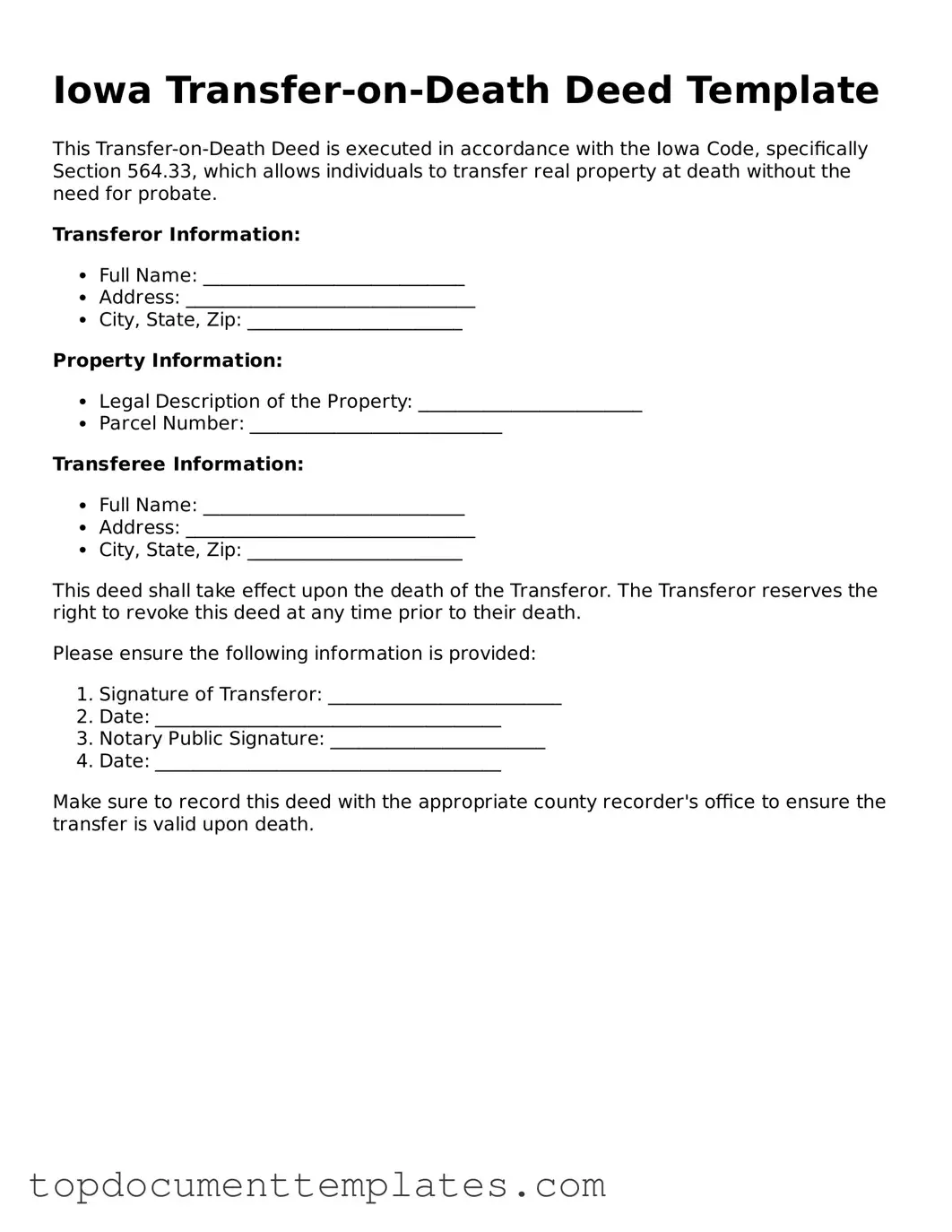The Iowa Transfer-on-Death Deed (TODD) serves as a crucial tool for property owners who wish to ensure a smooth transition of their real estate assets upon their passing. This legal instrument allows individuals to designate one or more beneficiaries to receive their property without the need for probate, streamlining the transfer process significantly. By completing and recording the TODD, property owners can maintain control over their assets during their lifetime while providing clear instructions for their distribution after death. The form requires specific information, including the names of the property owner and the designated beneficiaries, as well as a legal description of the property involved. Importantly, the TODD can be revoked or modified at any time before the owner's death, offering flexibility as circumstances change. Understanding the nuances of this deed is essential for anyone considering its use, as it can impact estate planning strategies and the financial well-being of beneficiaries. This article will delve into the key features, advantages, and potential pitfalls of the Iowa Transfer-on-Death Deed, equipping readers with the knowledge necessary to make informed decisions about their estate planning needs.
